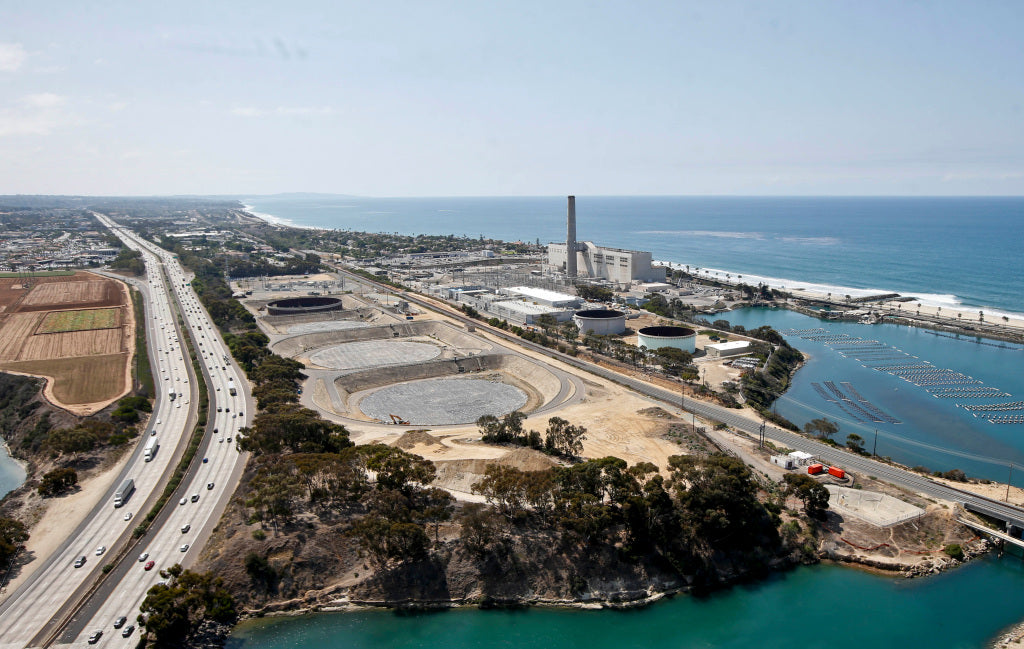Will The California Drought Be Solved By Desalination?
Droughts in California have prompted requests to build desalination facilities all along the coast, just as the hot, dry Santa Ana breezes deliver blue skies to the shore and flames to the hills.
Boosters claim that all of that ocean water, asking to be turned to fresh and poured into the pipelines, will quickly and completely ease the water supply concerns. The pounding would only become louder throughout the upcoming years.
This is not just because the present drought is the biggest and most severe in recent memory but also because a $1 billion desalination plant set to open in Carlsbad will get a lot of media attention. The facility, which is really the biggest of its kind in the United States, is expected to deliver roughly 50 million desalination plants gallons per day to California and around 7% of the county's total water demands.
The Central California Water Authority has agreed to buy the plant's full production for roughly $2,100 to $2,800 every acre-foot, and also inflation rate, for the next 30 years. One acre-foot is 324,841 gallons or approximately a year's worth of water for one or two five-person households.
The agreement was critical to Poseidon's funding, but it also implies the state would pay nearly $115 million each year whether or not it utilises the plant's water. To pay the expense, San Diego water bills are expected to climb by an estimate of $5 to $7 per month.
The county estimated that it would pay roughly as an amount for those other imported water throughout the future, making the agreement appear to be long-term insurance against a prolonged water problem.
However, desalinated water is significantly more expensive than some other available options. The Metro Water District charges California $921 per acre-foot for water supply. California could get recycled water with as little as $1,200 per acre-foot, according to the Pacific Institute, while the minimum cost of water acquired via energy conservation measures may be as low as $150.
California is taking a hazardous gamble that might backfire in a catastrophe. Investing in desalination is not really a smart strategy to deal with a drought. The drought will be over by the time the authorities finish it.
In this article, we will mention everything you need to know about California’s drought problems and why they opt for the desalination option. Continue reading for more.
What Is A Drought And Why Do Droughts Occur?
A drought occurs when there is a prolonged absence of precipitation, such as rain, snowfall, or sleet, leading to water scarcity. Droughts are natural occurrences, but human activities, such as water usage and management, can worsen them. What constitutes a drought varies by location and is primarily determined by weather conditions unique to that area. Mostly on tropical islands, the drought threshold can be reached after around six rainless days,
Drought is a particular threat to developing countries as a result of climate change. Between 2005 to 2015, cattle, crops, as well as fisheries accounted for more than 80% of drought-related financial damage and loss in developing countries. Drought is infamous in poor countries for causing water and food shortages, as well as worsening pre-existing issues like hunger and civil upheaval. It can also lead to widespread migration, causing whole communities to be displaced.
Why Is California Opting Desalination
Drought and water shortages are becoming more common as a result of climate change. However, California has been hesitant to opt for a solution used in over 150 nations, which is desalination.
Filtered saltwater is becoming a major supply of fresh water all over the world. With more than half of the world's existing desalination plants, the Middle East - Saudi, Qatar, the Arab Emirates, Oman, and Iran is using this solution.
The Water Resilient Portfolio was just issued by the California Water Resources Agency, as well as the California Division of Food and Agriculture. Officials stressed the necessity of diversifying water supplies by introducing new water sources while preparing for emerging risks, such as more severe droughts.
The report's writers believe the need of considering all of the instruments throughout the water system toolbox, citing seawater and coastal water desalination as one way to enhance water supply diversity and lessen the reliance on historically less dependable rainfall and snowfall.
These suggestions reaffirm what we already understood for a long time. Desalination produces a clean supply of long-term, drought-resistant water, improving the resiliency of water supply by lowering demand on already-stressed resources. The Colorado River, the Gulf Delta, and the over groundwater basins are all examples of this in California.
What Is The Cause Of California's Drought?
California's current drought is getting worse. Reservoirs are decreasing, the risk of fire is increasing, and water resources are becoming more precarious after two extremely dry winters.
A growing body of evidence suggests that the state's water supply is nearly totally dependent on a handful of large make-or-break storms each year. Also, in the previous two winters, there were far too few visitors.
Every winter, such moisture-rich air river events, also known as Pineapple Express cyclones that come in from the Pacific Ocean, could contribute up to half of the state's yearly rainfall. Reservoirs overflow, roads wash away, and flooding surge if California experiences additional atmospheric river cyclones than usual as it occurred in 2017. For a few years in a row, there will be less than average snowfalls, and California will remain hot and dry.
A study done by a few journalists looked at 20 years of rainfall information from 176 meteorological stations across California in a research published in 2018.
They discovered that half of the year with the rainfall falls in fewer than 40 hours in total in Southern California and around 59 and 119 hours in Northern California, based on the location. In addition, the heaviest rain of the year accounts for 15% of yearly rainfall in Northern California and only 30% in Southern California.






